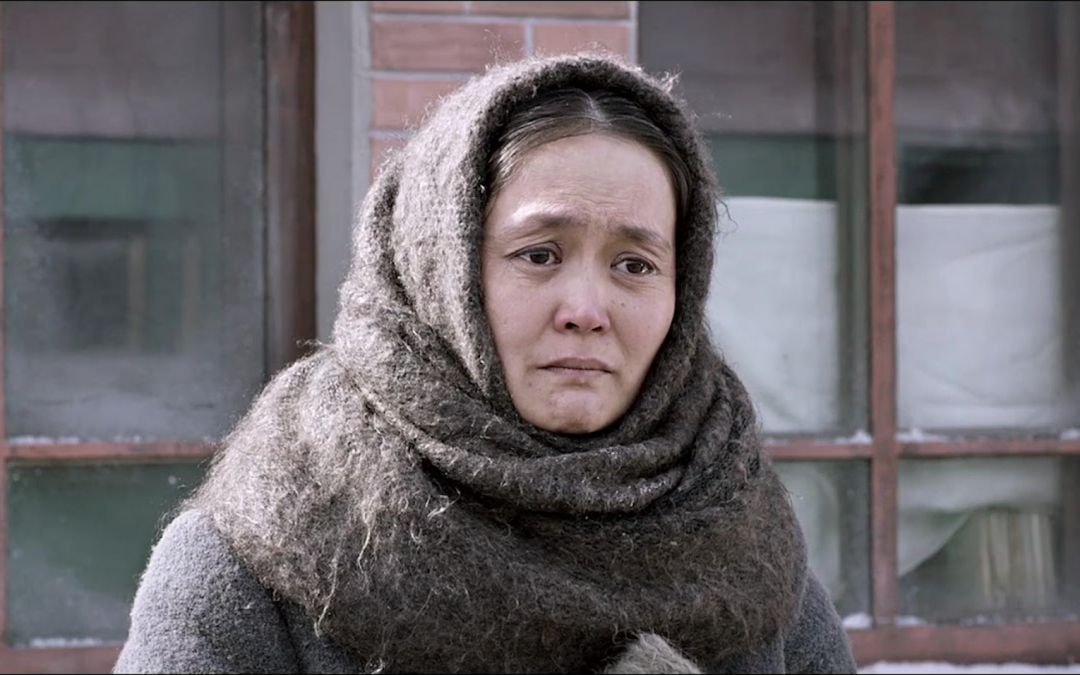Between the late 1910’s and the early 1990’s, the Soviet Union was a major superpower with a significant amount of power and influence over much of the world. Made up of Russia and several other formerly independent nations, The Soviet Union is no stranger when it comes to film. From Battleship Potemkin to Rocky IV, Soviet history, ideology, and relationships with foreign countries have long been the subject of multiple works of cinema. Yet one aspect of the Soviet Union – its influence on the nations it has annexed – has not received nearly as much focus, despite there being several of these smaller states. Perhaps this was something Kazakh director Akan Satayev desired to change with his 2015 historical epic, The Road to Mother.
Covering much of Kazakhstan’s history throughout the twentieth century, The Road to Mother centers around a man named Ilyas, played by Adil Akhmetov, and his journey through life in search of his family. As a child, Ilyas is kidnapped and separated from his mother Mariam (Altynai Nogherbek) as a result of the Soviet government’s imposition of collectivization farming onto the nomadic people of Kazakhstan. Throughout the film, Ilyas goes to great lengths to reunite with his mother, and while there are many close calls, the events depicted prevent mother and son from coming back together so easily. It’s through this journey that we are able to look at the nation of Kazakhstan and its involvement with the Soviet Union through the eyes of Ilyas and his family.
From its opening scene, which contains a long scroll of text describing Kazakh history prior to the twentieth century, the film is very clear in its intention to be an encapsulation of Kazakhstan and what it has gone through over the course of several decades. While the story of Ilyas and his mother is fictional, the events depicted in the narrative do reflect real-life incidents that occurred throughout the nation’s history. Kazakhstan’s involvement in World War II is a major highlight
of the film’s historical overview, and at one point, Ilyas is even sent to Ukraine to fight as part of the Soviet army.
In a way, the emphasis on Kazakh history is every bit as important to the film as the main story of Ilyas and Mariam; considering those producing the film, that might not be a coincidence. The film was commissioned by the Ministry of Culture of the Republic of Kazakhstan, a branch of the Kazakh government that serves to promote the nation and its values through art and culture. With this in mind, the film’s historical content becomes much more understandable. After all, what better way is there to educate the citizens of a nation than with a moving narrative that spans across the nation’s history?
That being said, this does not mean there is no merit to the central tale revolving around the bond between mother and child. For all the film does to patriotically showcase Kazakhstan and its history, it still manages to possess a strong heart that grounds the narrative in personal emotion that just about anyone can relate to. From the bond Ilyas forms with the head of an orphanage to Mariam’s vigil that allows her to retain faith that her son will return to her one day, there is never a point where the film loses track of the human story at its center.
Looking at The Road to Mother, one can’t help but be reminded of the 1939 film The Wizard of Oz. This makes sense narratively; much like Dorothy and her desire to return home to her family in Kansas, Ilyas’ primary objective is to return home to his own family. The obstacles he faces may not be nearly as fantastical as winged monkeys, but his journey is every bit as dangerous and challenging. What’s even more noticeable about the film’s similarities to Oz is how the film employs color choice in its cinematography. As it takes place during several different periods of time, the film gives each time period its own color spectrum to distinguish each period from the others. Color is used for scenes in the present day, whereas past events are shown in either black and white or sepia.
This is one of the techniques director Akan Satayev and cinematographer Khassan Kydyraliev use to show the grand scale of their film. Vast landscapes and epic battles are common throughout the film, and the cinematography is put to full use in order to make these moments feel epic and engaging. Shooting the film in a widescreen format akin to Lawrence of Arabia was certainly the right choice for this movie; framing these scenes with a more compressed screen width would restrict the visual quantity of any given shot, therefore making the scene less appealing on an aesthetic level.
In 2017, Kazakhstan submitted The Road to Mother as its contender for the Academy Award for Best Foreign Language Film. While the film would ultimately fail to earn a nomination, one can understand why Kazakhstan thought it would be strong enough for such recognition. There’s a
sense of universality in the film’s central story of a son’s decades-long journey to find his mother, and the historical content relating to Kazakhstan and its history with the Soviet Union gives insight into a nation that most might not be familiar with. There are numerous kinds of people that would likely find interest in this film. Whether one is a history buff, a veteran, a parent with a strained relationship with their child (or vice versa), or anywhere in between, there’s no denying that The Road to Mother has something for everybody. Starting May 26th, those who are interested can find it on streaming, VOD, Blu-ray/DVD, and other non-theatrical release platforms.



